- Home
- Mark Twain
Autobiography Of Mark Twain, Volume 1 Page 6
Autobiography Of Mark Twain, Volume 1 Read online
Page 6
The First Typescript (TS1)
A first step in solving the puzzle was to find reliable ways of distinguishing between the several, nearly identical typed copies in any given folder. The paper used, specific characteristics of the typewriter and habits of the typist, and of course the unexplained differences in pagination proved to be essential pieces of evidence. The very first typescript Hobby created from her stenographic notes was eventually isolated and identified in this way, and it is called hereafter TS1 (for typescript 1). Each of the other typescripts (sometimes with carbon copies as well) were similarly identified, and are herein referred to by number (TS2, TS3, and TS4). Once they were physically distinguishable in this way, it became possible to see that the (understandable) fashion in which daily dictations were filed had in fact long obscured why there were different typed copies.67 It was in turn possible to decide, on the basis of meticulous collation, which was copied from which, and to begin to make some sense of the various differences between them.
By 18 January Hobby had settled on a standard format for each session: she recorded the time spent on dictation and a word count at the top left of the first page, with the page number centered, and the date of dictation at the right, usually followed by a summary of the contents. Hobby marked in pencil any errors she had failed to correct on the machine. The typescript then went to Clemens for correction and revision. TS1 would total roughly twenty-six hundred consecutively numbered pages, beginning at page 1 with the dictation of 9 January 1906 and ending with the dictation of 14 July 1908, which Hobby completed shortly before leaving Clemens’s employment. Two later stenographer-typists produced another hundred or so pages of typescript, which did not continue the TS1 pagination sequence.68
Hobby soon agreed to give up her job with the Century Company in order to work for Clemens exclusively during the summer and possibly longer. On 13 March Lyon commented in her journal, “Mr. Clemens finds her entirely to his liking & he says ‘it is a case of established competency’ which is saying a great deal—for she is a good audience, is sympathetic & very appreciative.”69 By 8 April Hobby had transcribed her notes through the end of the 28 March 1906 dictation.
Despite the risk of somehow losing TS1, a unique copy (there was no carbon copy at this point), Clemens allowed Clara to carry away and read about five hundred pages, through the end of the 16 March dictation. He also lent Twichell three days’ dictation, probably those for 23, 26, and 27 March. On 8 April, Lyon recorded that “Mr. Twichell is here—Mrs., too—& Mr. T. thinks the auto. MS. is absorbingly interesting.” He presumably returned the three dictations at that time. The same day Clemens took the entire 28 March dictation (Orion’s misadventure with Dr. Meredith’s “old-maid sisters”) up to lunch with Howells at the Hotel Regent. Howells returned the pages by the next day’s mail:
I want to see every word of the 578 pages before this, which is one of the humanest and richest pages in the history of man. If you have gone this gate [i.e., gait] all through you have already gone farther than any autobiographer ever went before. You are nakeder than Adam and Eve put together, and truer than sin. But—but—but you really mustn’t let Orion have got into the bed. I know he did, but—
Lyon noted that Clara had written “enthusiastically about it too,” but her letter has not been found. Clemens replied to her in Atlantic City, two days before she was supposed to return the pages to him:
I am so glad, you dear ashcat! so glad the auto interests you; I was so afraid it wouldn’t. I couldn’t guess as to how it might read, for I have purposely refrained from reading a line of it myself, lest I should find myself disappointed & throw up the job. I wanted it to gather age before I should look at it, so that it would read to me as it would to a stranger—then I could judge it intelligently. However, as Twichell wanted to experiment with it I took the last 3 days instalments & corrected them—& in this way I found out that I was doing well enough for an apprentice who was an unpractised learner in the art of dictating to a stenographer. Twichell’s verdict is, that the interest doesn’t flag. That’s all I want. I only want to interest the reader, he can go elsewhere for profit & instruction.70
On 11 April Clemens took a break from his dictating routine, and did not resume until 21 May, after he, Jean, and Lyon were settled for the summer in the isolated Upton House near the village of Dublin, New Hampshire. Clemens arrived there on 15 May; Paine and Hobby arrived a few days later and found quarters nearby. Paine reported, “We began in his bedroom, as before, but the feeling there was depressing.” He described the view from the verandah of the Upton House as “one of the most beautiful landscape visions on the planet,” and reported that Clemens soon saw the opportunity it presented: “I think we’ll do our dictating out here hereafter. It ought to be an inspiring place.” Lyon occasionally recorded Clemens’s (and her own) impatience with the “old-maidish whims” and slowness of the “Hobby horse,” but for the most part the morning sessions seem to have been remarkably amicable.71 Lyon described one of them in her journal:
There was a long—a 3 hour dictation this morning, when Mr. Clemens used letters as a subject. . . . It was beautiful to hear the laughter from the porch; the King’s rich laugh, the biographer’s falsetto delight & the stenographer’s chirping gurgle—it made a lovely song. I stole out to sit on a wicker thing in the hall & watch & listen. The King in white—the biographer in soft grey & the stenographer in dark blue, with a kitten in her lap.72
In late May Clemens also began in earnest the job of reading and correcting the four months’ accumulation of TS1, which by then consisted of over seven hundred pages (through the dictation for 11 April). He revised the typescript in black ink, only rarely in pencil, making relatively few changes in wording—at least after the first ten dictations—and he consistently made a smattering of changes or corrections to spelling, punctuation, and paragraphing. For the most part Hobby seems to have learned, directly or indirectly from Clemens, how he preferred to spell and punctuate. Inevitably there were mistakes, especially in proper names (“Katie” instead of “Katy,” “Susie” instead of the preferred “Susy,” “Twitchell” instead of “Twichell”). And with a backlog of hundreds of pages typed before he began his review, Clemens inevitably found repetitive errors. Lyon noted in her journal:
Day after day Mr. Clemens is harassed and tormented when he is reading the dictated matter by continually coming across Hobby blunders, & the worst one—the most exasperating one is where she invariably corrects Mr. Clemens, writing “one thousand” or “one hundred,” where he has said “a thousand”, or “a hundred.” Today it passed the limit of his endurance. Through his tightly shut teeth he damned that “hell-fired word” until he was tired; & then he went for “that idiot!”—“that devilish woman! I’d like some one to take her out & have her scalped and gutted!”—73
He had found (and corrected) over two dozen instances of this trivial but irritating error. One can only hope that he alerted Hobby to her mistake in a less ferocious mood.
S. S. McClure and Syndication
Clemens’s correction and revision of TS1 was given a special impetus by S.S. McClure, founder of McClure’s Syndicate and McClure’s Magazine, who offered to pay Clemens a dollar per word for the right to syndicate fifty thousand words from the autobiography. As Clemens reviewed Hobby’s typescripts and some of his pre-1906 texts, he began noting likely candidates for McClure’s proposed syndication. For instance, the blue-penciled notation “Mc” is written at the top of the first page of the 1904 “Villa di Quarto” typescript, and the same or a similar notation can be seen on several other pages of TS1 prepared between January and March 1906. Still other dictations were marked “Not for MC.”
Clemens was not, however, free to accept McClure’s bid. He had signed an exclusive contract with Harper and Brothers on 22 October 1903, which prohibited his publishing with another firm any of his “books, writings or works now existing or which may hereafter be created.” It further stipulated that all “mi
scellaneous articles accepted for magazines or periodicals shall be paid for at the rate of thirty cents a word.” Even so, on 27 May Clemens kept Lyon busy for two hours taking notes while he outlined “a course of action to be followed out in his scheme of breaking away from the Harper Contract & selling 50000 words to McClure for $50000.00 to be syndicated.” His interest in publishing with McClure was more than financial, however. He had an express desire to see the selections “go into the papers—even into the Hearst papers—to reach his ‘submerged clientele.’”74 He further explained to Rogers,
I’d like to see a lot of this stuff in print before I die—but not the bulk of it, oh no! I am not desiring to be crucified yet. Howells thinks the Auto will outlive the Innocents Abroad a thousand years, & I know it will. I would like the literary world to see (as Howells says) that the form of this book is one of the most memorable literary inventions of the ages. And so it is. It ranks with the steam engine, the printing press & the electric telegraph. I’m the only person who has ever found out the right way to build an autobiography.
Rogers, however, did not favor accepting McClure’s offer. Believing that the Harper contract was “so valuable that they would seize the opportunity of breaking the arrangement if it were possible,” he urged Clemens not to “think of anything that will vitiate” it.75
“The Final (and Right) Plan” (June 1906)
On 10 June Clemens wrote to a friend, “I’ve stopped dictating—tired of it. I’ve stopped reading autobiography & admiring it—tired to death of it!”76 Clemens’s lack of enthusiasm must have been merely a passing mood, however, since he did not in fact stop dictating or “reading autobiography.” From 11 to 14 June he dictated every day (as well as on six more days before the end of the month), while he continued to read and revise TS1, working his way through the backlog of over nine hundred pages by 21 June. And it was also at this time that he decided to return to a task that he had begun the previous winter but suspended in May: reviewing his earlier manuscripts, including his preliminary attempts at autobiography. On 8 June he sent Paine to the house at 21 Fifth Avenue to fetch the cache of manuscripts that he had gathered together for use in the biography as well as for his copyright scheme.77 Many years later, Lyon annotated a copy of Paine’s edition where “The Tennessee Land” began, explaining that “in the winter of 1905–6” Clemens pursued his idea of using “autobiographical notes to be added to each volume on its copyright expiration, thus creating a new volume with its new copyright to be extended for 14 years. . . . He asked me for the notes he wrote in 1870 & later—& here is the beginning.” It is also likely that at about the same time she heard Clemens read the manuscript of what Paine titled “Early Years in Florida, Missouri.” She noted in Paine’s edition, “Mr Clemens called for this MS. which he read aloud to me; often deeply moved by memories his voice momentarily lost in emotion.”78
Paine arrived back in Dublin on the thirteenth with a “small steamer trunk” of manuscripts. On 22 June Lyon wrote in her journal:
. . . & then after luncheon we sat on the porch & Mr. Clemens read the very first autobiography beginning, a bit written many years ago ^about 1879^—44 typewritten pages, & telling of his boyhood days, & the farm, & the joys of living in It is a beautiful bit of poetry—it is full of pictures & the afternoon was very very lovely ^He was deeply moved as he read on & on.^79
Clemens may have been considering which of his early reminiscences he liked well enough to add to the autobiography, if only to enlarge its bulk. A few days earlier (17 June) he had written a long letter to Howells in which he referred to yet another way to expand his text, this one taking advantage of posthumous publication:
There’s a good deal of “fat.” I’ve dictated, (from Jan. 9) 210,000 words, & the “fat” adds about 50,000 more.
The “fat” is old pigeon-holed things, of the years gone by, which I or editors didn’t das’t to print. For instance, I am dumping in the little old book which I read to you in Hartford about 30 years ago & which you said “publish—& ask Dean Stanley to furnish an introduction; he’ll do it.” “(Captain Stormfield’s Visit to Heaven.”) It reads quite to suit me, without altering a word, now that it isn’t to see print until I am dead.
And, in a postscript, he added: “I’ve written a short Preface. I like the title of it: ‘Spoken from the Grave.’ It will prepare the reader for the solemnities within.”80
The manuscript of this preface (whose subtitle is “As from the Grave”) and a draft of the title page survive in the Mark Twain Papers, as does a typed copy of the title page, on which Clemens drafted a series of notes specifying restrictions and conditions for publishing the autobiography. He then decided to add to his short “Preface” by enlarging on these notes. Addressing his “editors, heirs and assigns,” he dwelt at facetious length on how successive editions could include more and more of his (supposedly shocking) “sound and sane expressions of opinion.”
It is now clear that by the time Clemens read aloud the “44 typewritten pages . . . telling of his boyhood days, & the farm” on 22 June, he had already decided to use that sketch to begin the Autobiography. He wrote a one-page preface called “An Early Attempt” to introduce it, then followed that with a single page instruction: “Here insert the 44 old type-written pages.” This “old” typescript has been lost, but we now know that it was a typed copy of the manuscript he called “My Autobiography [Random Extracts from It],” written in Vienna in 1897–98. It is not known when this (now missing) typescript was prepared, but it was probably no later than 1900.81
At about the same time he also decided to further illustrate the evolution of his ideas about autobiography by including some of the dictations produced in Florence in 1904. To frame these he wrote a matching preface called “The Latest Attempt,” characterizing them as examples of “the right way” to do an autobiography. And he made one more change, adding “The Final (and Right) Plan” and an epigraph (“What a wee little part of a person’s life . . . ”).82 The result was a three-part preface, concluding with the “Preface. As from the Grave” (divided into three sections), followed by the introductory note “Here begin the Florentine Dictations.”
The present edition prints this extensive front matter, complete and in the sequence that Clemens intended, for the first time. All of the material was known to Paine (his penciled page numbers are on the manuscript pages). But he apparently realized that it interfered with his own plan for the autobiography: a sequence of early sketches and the Florentine Dictations in the order of their composition, followed by a selection of the Autobiographical Dictations from January through April 1906. He included the epigraph and the first section of “As from the Grave” at the beginning of his first volume, placing “The Latest Attempt” before the Florentine Dictations but calling it “Author’s Note.” He omitted entirely “An Early Attempt” and the second and third sections of “Preface. As from the Grave.”83 The prefatory pages, all in the Mark Twain Papers, are shown in sequence on the facing page and reproduced in facsimile in figures 2-13.
Since the “44 old type-written pages” are admittedly lost, how can we be sure that they were in fact a copy of “My Autobiography [Random Extracts from It]”? And how can we tell which of the six surviving Florentine Dictations were intended to follow “As from the Grave”?
The multiple typescripts of the January–August 1906 dictations hold the answer to both questions.
Two More Typescripts: TS2 and TS4
In his postscript to the 17 June letter to Howells, Clemens had said: “I think Miss Lyon told you the reason we couldn’t send you the Autobiography—there’s only one typed copy, & we had to have it for reference, to guard against repetitions. The making of a second copy is now begun; & so, we can presently begin to mail batches of it to you.”84 TS1 had been begun without any provision for a carbon copy. But Howells’s and Twichell’s interest in seeing the text earlier in April, and McClure’s interest in late May, made it increasingly clear that duplicates we
re vitally needed—hence the decision to begin a carbon copy of TS1 from that point, certainly no later than 11 June.85 But that still left more than eight hundred pages of dictation in a unique copy, much of which had been revised.
Clemens’s postscript shows that by 17 June “a second copy” had been commissioned. In fact, not one but two typed copies of TS1 were begun in mid- to late June, soon after the various prefaces had been created: the first typed by Hobby (TS2) and the second by an unidentified typist (TS4). These sequences are distinguishable by their differences in pagination and by minute differences in their typists’ styles. Collation demonstrates that TS2 and TS4 were both copied independently from the recently revised TS1, not one from the other. Both TS2 and TS4 originally began with the “Random Extracts” text, but both omit the “Early Attempt” preface written for it. TS4 includes the other three-part preface and four of the Florentine Dictations (“John Hay,” “Notes on ‘Innocents Abroad,’” “Robert Louis Stevenson and Thomas Bailey Aldrich,” and “Villa di Quarto”), and TS2 originally did so as well. But only parts of TS2 for these early texts survive: gaps in it (shown by missing page numbers) cannot always be certainly reconstructed, but all surviving evidence shows that the missing pages were identical in content to those of TS4, which is the only complete record of these initial elements in Clemens’s plan. This conjecture explains why the page numbers for the January-August 1906 dictations in TS2 and TS 4 are different from each other and consistently higher than the page numbers of TS1 for the corresponding dictation. TS 1 begins with the Autobiographical Dictation of 9 January, having been started before Clemens decided to include any of the early material.86

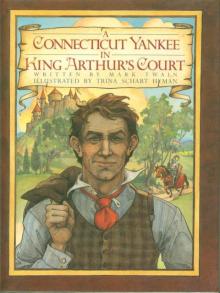 A Connecticut Yankee in King Arthur's Court
A Connecticut Yankee in King Arthur's Court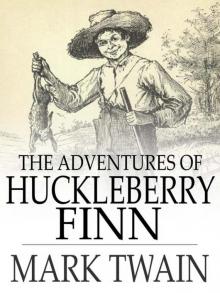 Adventures of Huckleberry Finn
Adventures of Huckleberry Finn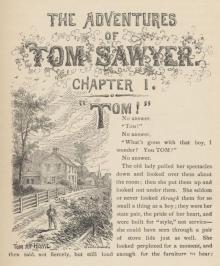 The Adventures of Tom Sawyer, Part 1.
The Adventures of Tom Sawyer, Part 1.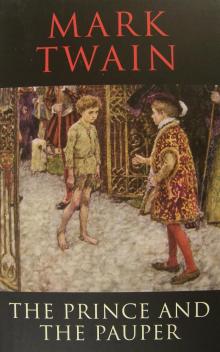 The Prince and the Pauper
The Prince and the Pauper The American Claimant
The American Claimant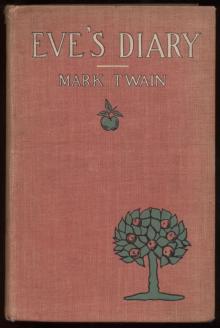 Eve's Diary, Complete
Eve's Diary, Complete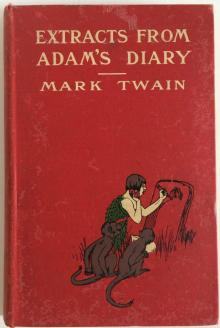 Extracts from Adam's Diary, translated from the original ms.
Extracts from Adam's Diary, translated from the original ms.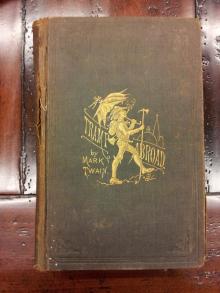 A Tramp Abroad
A Tramp Abroad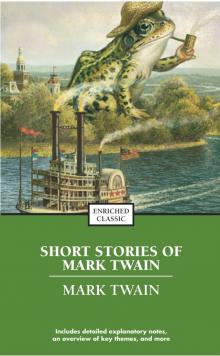 The Best Short Works of Mark Twain
The Best Short Works of Mark Twain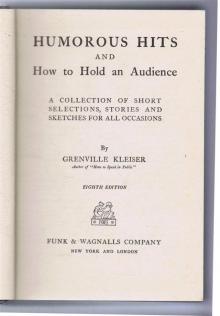 Humorous Hits and How to Hold an Audience
Humorous Hits and How to Hold an Audience The Speculative Fiction of Mark Twain
The Speculative Fiction of Mark Twain The Facts Concerning the Recent Carnival of Crime in Connecticut
The Facts Concerning the Recent Carnival of Crime in Connecticut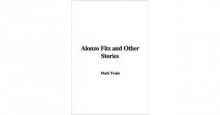 Alonzo Fitz, and Other Stories
Alonzo Fitz, and Other Stories The $30,000 Bequest, and Other Stories
The $30,000 Bequest, and Other Stories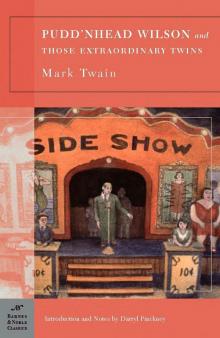 Pudd'nhead Wilson and Those Extraordinary Twins
Pudd'nhead Wilson and Those Extraordinary Twins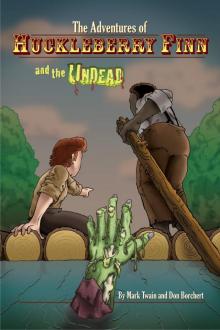 The Adventures of Huckleberry Finn and the Undead
The Adventures of Huckleberry Finn and the Undead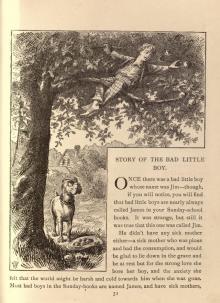 Sketches New and Old
Sketches New and Old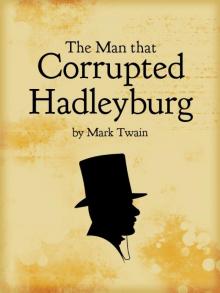 The Man That Corrupted Hadleyburg
The Man That Corrupted Hadleyburg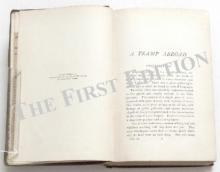 A Tramp Abroad — Volume 06
A Tramp Abroad — Volume 06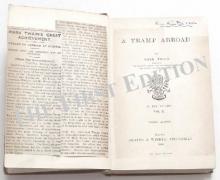 A Tramp Abroad — Volume 02
A Tramp Abroad — Volume 02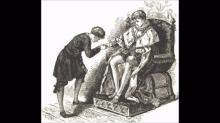 The Prince and the Pauper, Part 1.
The Prince and the Pauper, Part 1. Adventures of Huckleberry Finn, Chapters 16 to 20
Adventures of Huckleberry Finn, Chapters 16 to 20 The Prince and the Pauper, Part 9.
The Prince and the Pauper, Part 9.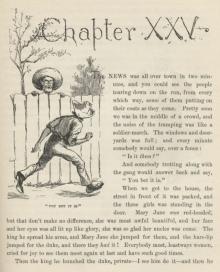 Adventures of Huckleberry Finn, Chapters 21 to 25
Adventures of Huckleberry Finn, Chapters 21 to 25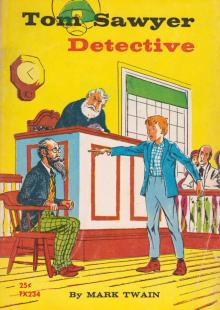 Tom Sawyer, Detective
Tom Sawyer, Detective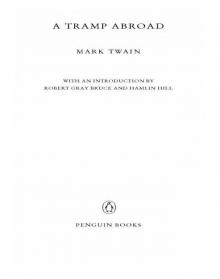 A Tramp Abroad (Penguin ed.)
A Tramp Abroad (Penguin ed.)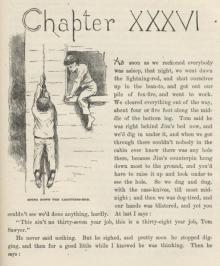 Adventures of Huckleberry Finn, Chapters 36 to the Last
Adventures of Huckleberry Finn, Chapters 36 to the Last The Mysterious Stranger, and Other Stories
The Mysterious Stranger, and Other Stories A Tramp Abroad — Volume 03
A Tramp Abroad — Volume 03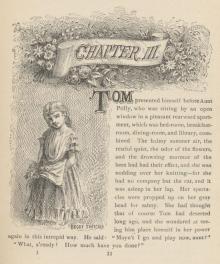 The Adventures of Tom Sawyer, Part 3.
The Adventures of Tom Sawyer, Part 3. Adventures of Huckleberry Finn, Chapters 06 to 10
Adventures of Huckleberry Finn, Chapters 06 to 10_preview.jpg) The Adventures of Huckleberry Finn (Tom Sawyer's Comrade)
The Adventures of Huckleberry Finn (Tom Sawyer's Comrade)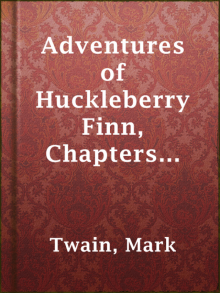 Adventures of Huckleberry Finn, Chapters 31 to 35
Adventures of Huckleberry Finn, Chapters 31 to 35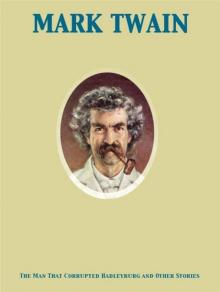 The Man That Corrupted Hadleyburg, and Other Stories
The Man That Corrupted Hadleyburg, and Other Stories A Tramp Abroad — Volume 07
A Tramp Abroad — Volume 07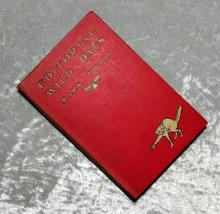 Editorial Wild Oats
Editorial Wild Oats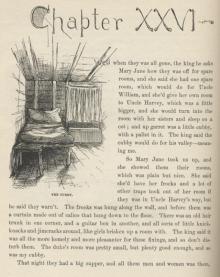 Adventures of Huckleberry Finn, Chapters 26 to 30
Adventures of Huckleberry Finn, Chapters 26 to 30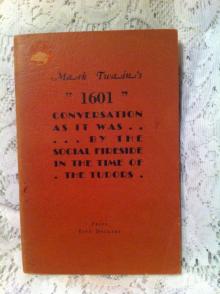 1601: Conversation as it was by the Social Fireside in the Time of the Tudors
1601: Conversation as it was by the Social Fireside in the Time of the Tudors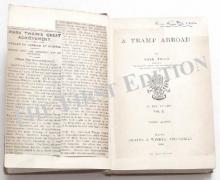 A Tramp Abroad — Volume 05
A Tramp Abroad — Volume 05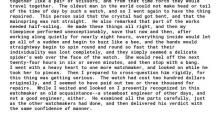 Sketches New and Old, Part 1.
Sketches New and Old, Part 1.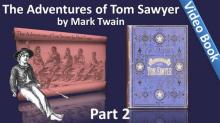 The Adventures of Tom Sawyer, Part 2.
The Adventures of Tom Sawyer, Part 2.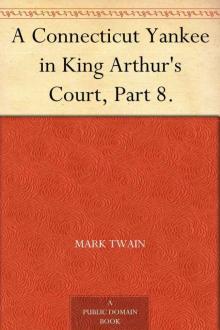 A Connecticut Yankee in King Arthur's Court, Part 8.
A Connecticut Yankee in King Arthur's Court, Part 8. A Tramp Abroad — Volume 01
A Tramp Abroad — Volume 01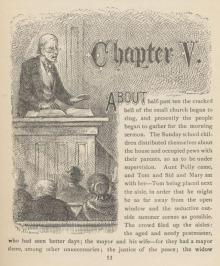 The Adventures of Tom Sawyer, Part 5.
The Adventures of Tom Sawyer, Part 5. Adventures of Huckleberry Finn, Chapters 01 to 05
Adventures of Huckleberry Finn, Chapters 01 to 05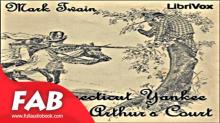 A Connecticut Yankee in King Arthur's Court, Part 1.
A Connecticut Yankee in King Arthur's Court, Part 1.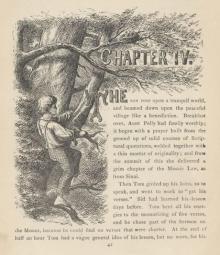 The Adventures of Tom Sawyer, Part 4.
The Adventures of Tom Sawyer, Part 4.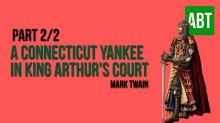 A Connecticut Yankee in King Arthur's Court, Part 2.
A Connecticut Yankee in King Arthur's Court, Part 2.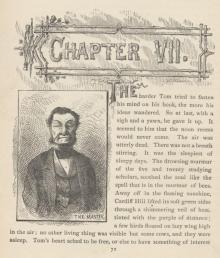 The Adventures of Tom Sawyer, Part 7.
The Adventures of Tom Sawyer, Part 7.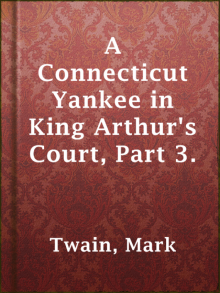 A Connecticut Yankee in King Arthur's Court, Part 3.
A Connecticut Yankee in King Arthur's Court, Part 3.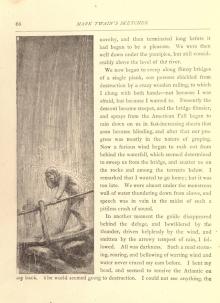 Sketches New and Old, Part 4.
Sketches New and Old, Part 4.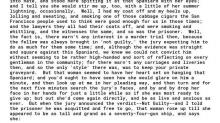 Sketches New and Old, Part 3.
Sketches New and Old, Part 3.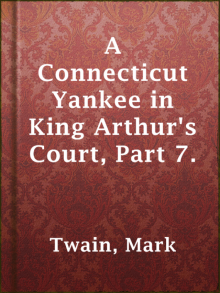 A Connecticut Yankee in King Arthur's Court, Part 7.
A Connecticut Yankee in King Arthur's Court, Part 7. A Connecticut Yankee in King Arthur's Court, Part 5.
A Connecticut Yankee in King Arthur's Court, Part 5. A Connecticut Yankee in King Arthur's Court, Part 6.
A Connecticut Yankee in King Arthur's Court, Part 6.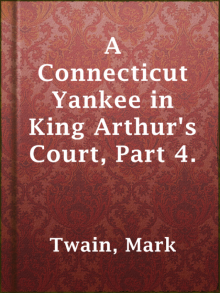 A Connecticut Yankee in King Arthur's Court, Part 4.
A Connecticut Yankee in King Arthur's Court, Part 4. Sketches New and Old, Part 2.
Sketches New and Old, Part 2.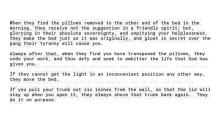 Sketches New and Old, Part 6.
Sketches New and Old, Part 6. Adventures of Huckleberry Finn, Chapters 11 to 15
Adventures of Huckleberry Finn, Chapters 11 to 15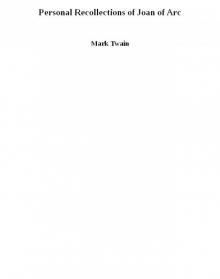 Personal Recollections of Joan of Arc
Personal Recollections of Joan of Arc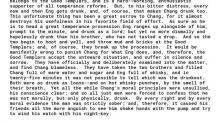 Sketches New and Old, Part 5.
Sketches New and Old, Part 5. Eve's Diary, Part 3
Eve's Diary, Part 3 Sketches New and Old, Part 7.
Sketches New and Old, Part 7. Mark Twain on Religion: What Is Man, the War Prayer, Thou Shalt Not Kill, the Fly, Letters From the Earth
Mark Twain on Religion: What Is Man, the War Prayer, Thou Shalt Not Kill, the Fly, Letters From the Earth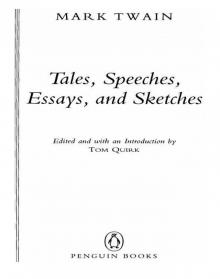 Tales, Speeches, Essays, and Sketches
Tales, Speeches, Essays, and Sketches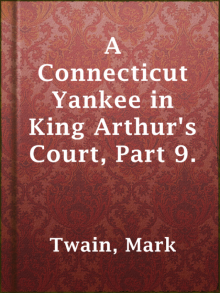 A Connecticut Yankee in King Arthur's Court, Part 9.
A Connecticut Yankee in King Arthur's Court, Part 9.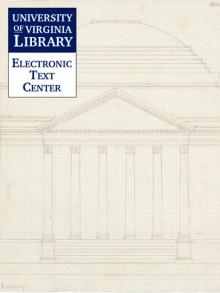 Our Fellow Savages of the Sandwich Islands (version 1)
Our Fellow Savages of the Sandwich Islands (version 1) 1601
1601 Letters from the Earth
Letters from the Earth Curious Republic Of Gondour, And Other Curious Whimsical Sketches
Curious Republic Of Gondour, And Other Curious Whimsical Sketches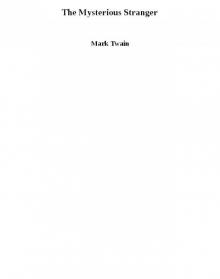 The Mysterious Stranger
The Mysterious Stranger Life on the Mississippi
Life on the Mississippi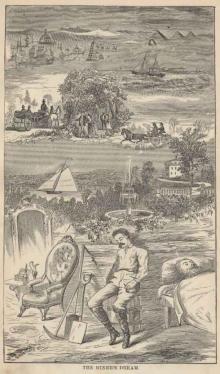 Roughing It
Roughing It Alonzo Fitz and Other Stories
Alonzo Fitz and Other Stories The 30,000 Dollar Bequest and Other Stories
The 30,000 Dollar Bequest and Other Stories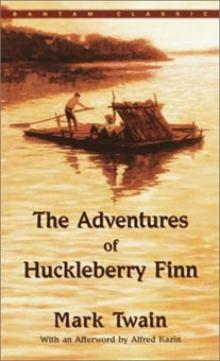 The Adventures of Huckleberry Finn taots-2
The Adventures of Huckleberry Finn taots-2 A Double-Barreled Detective Story
A Double-Barreled Detective Story adam's diary.txt
adam's diary.txt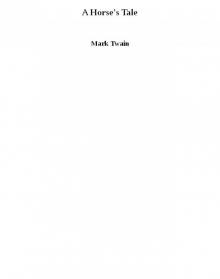 A Horse's Tale
A Horse's Tale Autobiography Of Mark Twain, Volume 1
Autobiography Of Mark Twain, Volume 1 The Comedy of Those Extraordinary Twins
The Comedy of Those Extraordinary Twins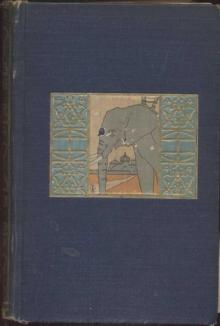 Following the Equator
Following the Equator Goldsmith's Friend Abroad Again
Goldsmith's Friend Abroad Again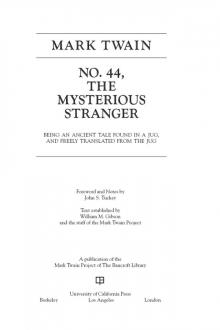 No. 44, The Mysterious Stranger
No. 44, The Mysterious Stranger The Stolen White Elephant
The Stolen White Elephant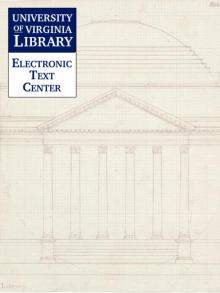 The $30,000 Bequest and Other Stories
The $30,000 Bequest and Other Stories The Curious Republic of Gondour, and Other Whimsical Sketches
The Curious Republic of Gondour, and Other Whimsical Sketches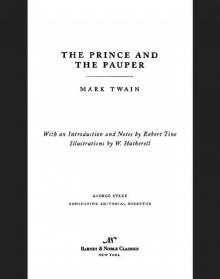 Prince and the Pauper (Barnes & Noble Classics Series)
Prince and the Pauper (Barnes & Noble Classics Series)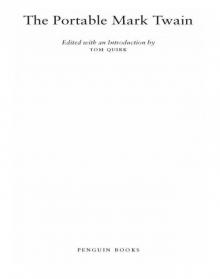 The Portable Mark Twain
The Portable Mark Twain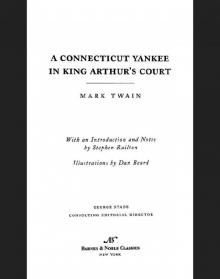 Connecticut Yankee in King Arthur's Court (Barnes & Noble Classics Series)
Connecticut Yankee in King Arthur's Court (Barnes & Noble Classics Series) The Adventures of Tom Sawyer taots-1
The Adventures of Tom Sawyer taots-1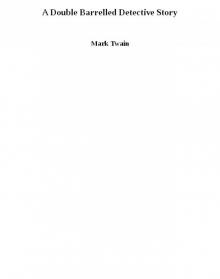 A Double Barrelled Detective Story
A Double Barrelled Detective Story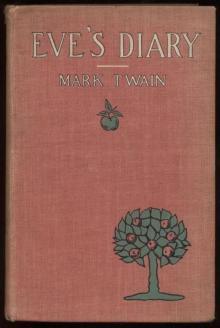 Eve's Diary
Eve's Diary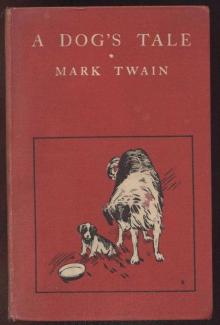 A Dog's Tale
A Dog's Tale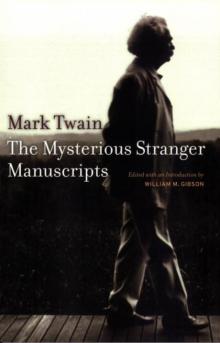 The Mysterious Stranger Manuscripts (Literature)
The Mysterious Stranger Manuscripts (Literature) The Complete Short Stories of Mark Twain
The Complete Short Stories of Mark Twain What Is Man? and Other Essays
What Is Man? and Other Essays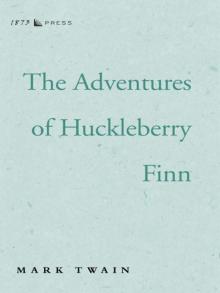 The Adventures of Huckleberry Finn
The Adventures of Huckleberry Finn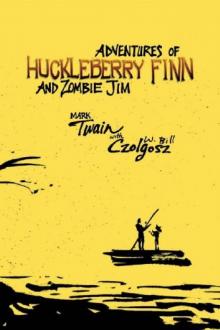 Adventures of Huckleberry Finn and Zombie Jim
Adventures of Huckleberry Finn and Zombie Jim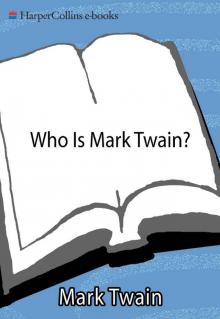 Who Is Mark Twain?
Who Is Mark Twain?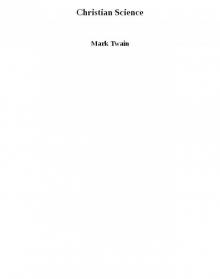 Christian Science
Christian Science The Innocents Abroad
The Innocents Abroad Some Rambling Notes of an Idle Excursion
Some Rambling Notes of an Idle Excursion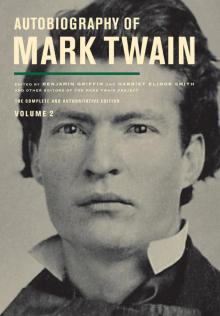 Autobiography of Mark Twain
Autobiography of Mark Twain Those Extraordinary Twins
Those Extraordinary Twins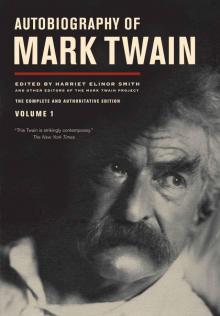 Autobiography of Mark Twain: The Complete and Authoritative Edition, Volume 1
Autobiography of Mark Twain: The Complete and Authoritative Edition, Volume 1